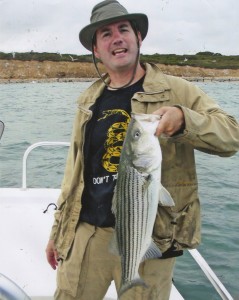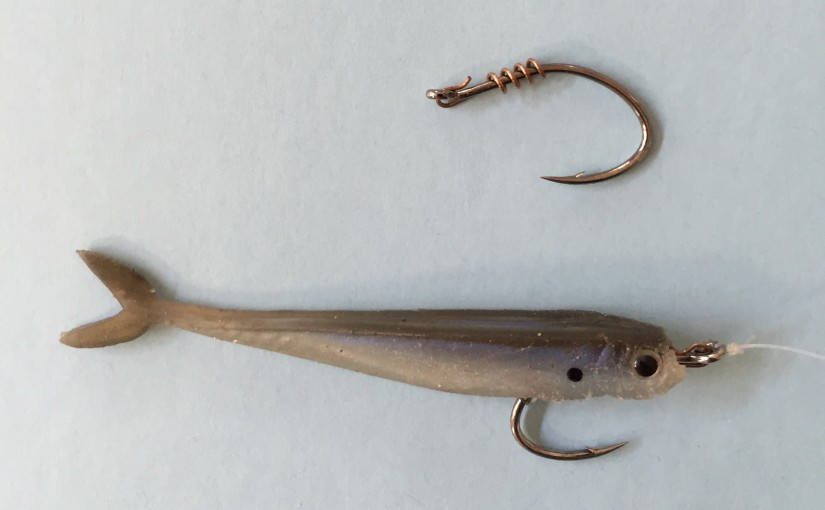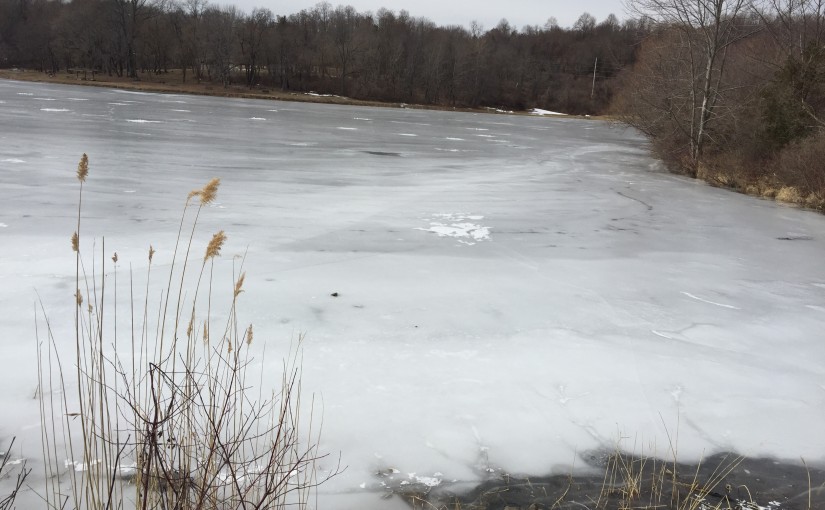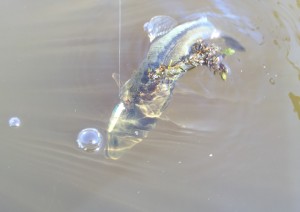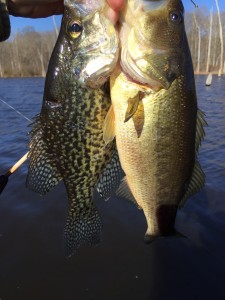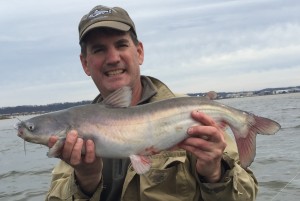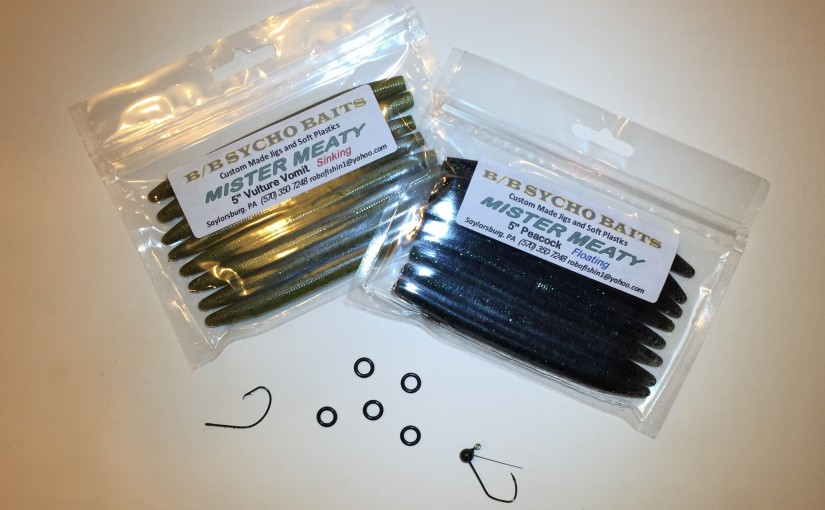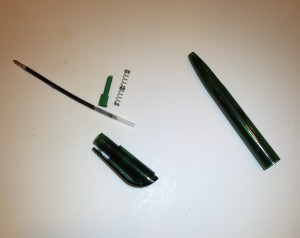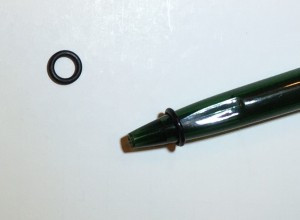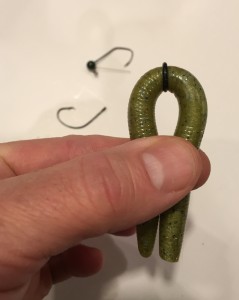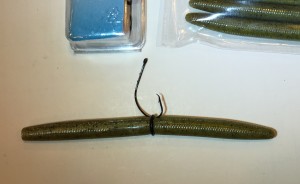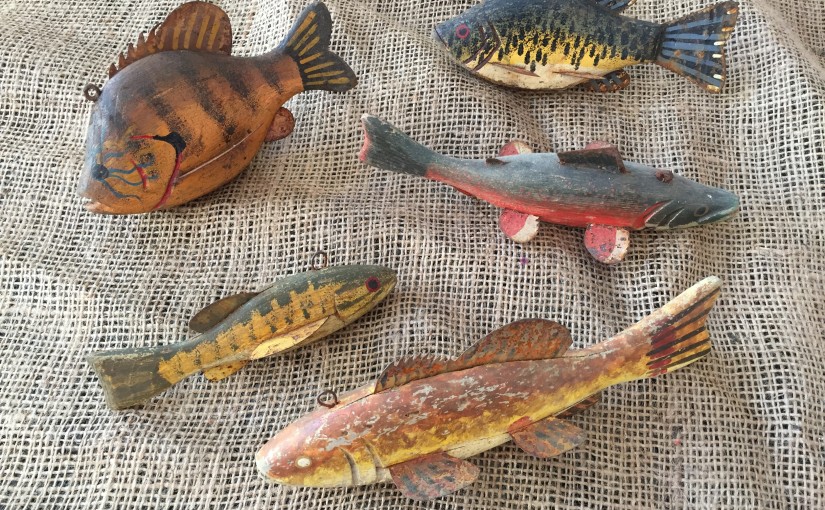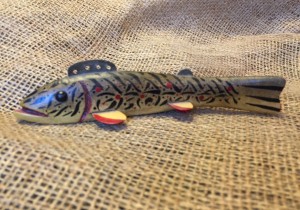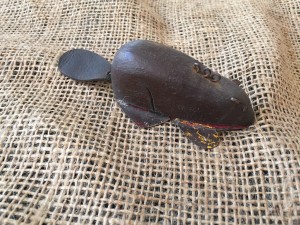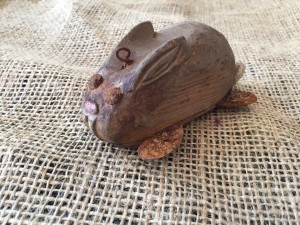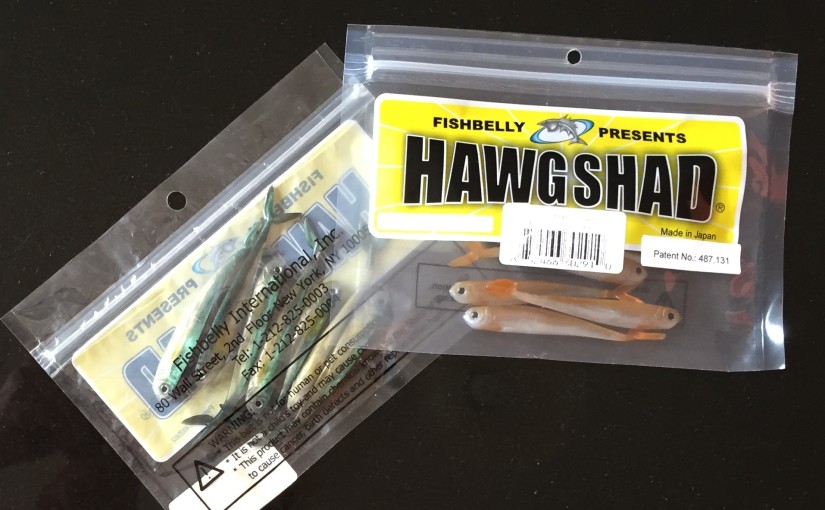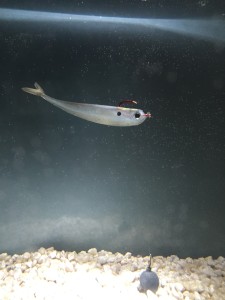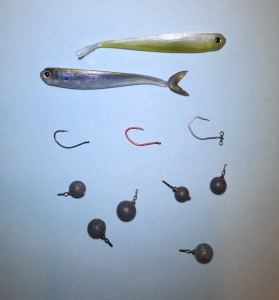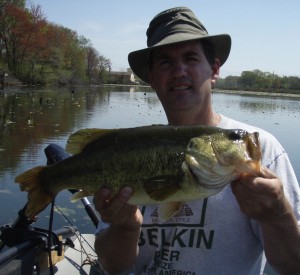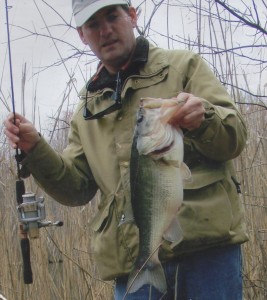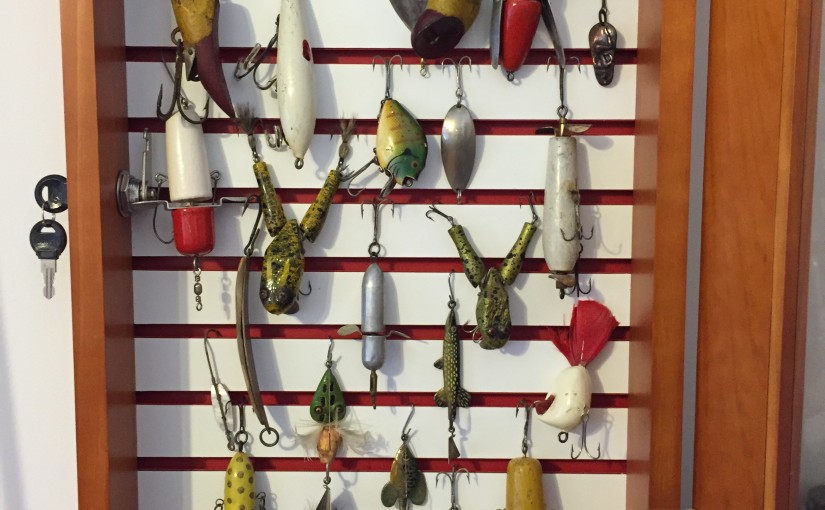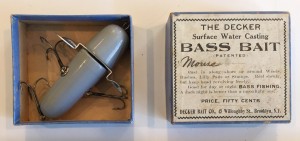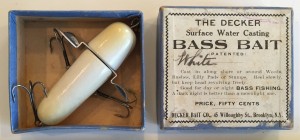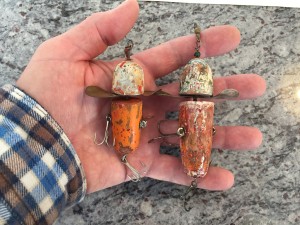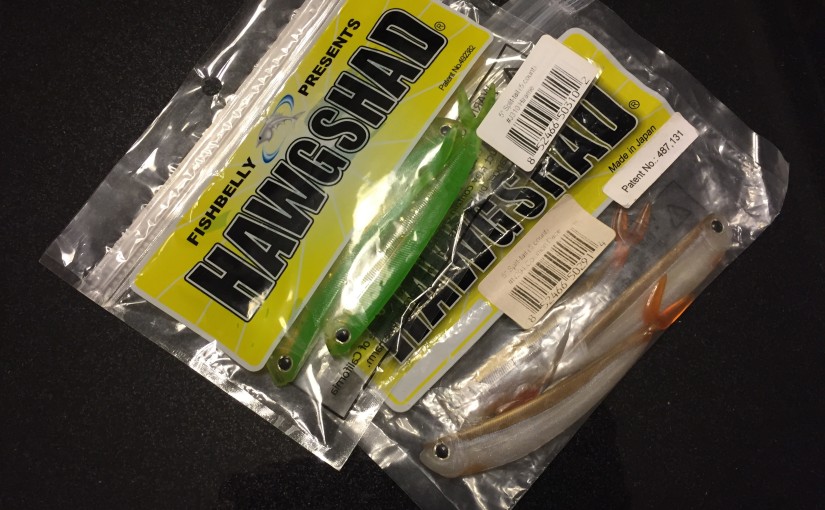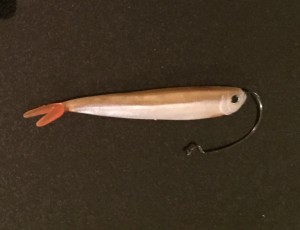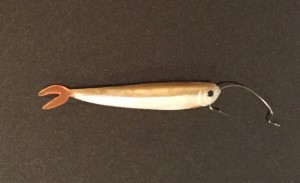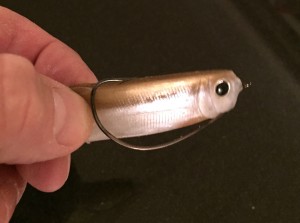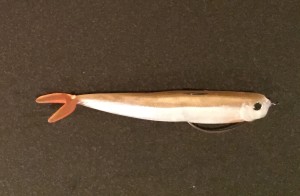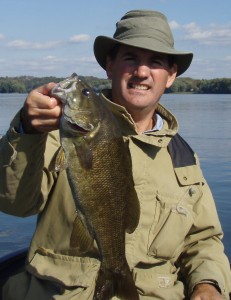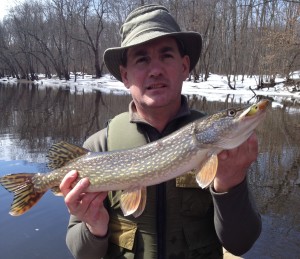This is not the usual configuration for a “keeper” an hook, but this is the most secure small plastic rigging I have tried. It far outperforms glue or pegging. It holds up to repeated casting, strikes, and all kinds of rough handling. I first thought of this for surf teasers, but have since used it for trolling rigs (more on that another time), and even casting with a flyrod – all with great success.
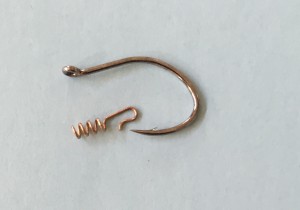
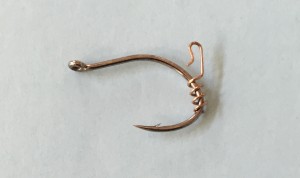
Slip a keeper over the point of the hook, clip end first.

Slide the keeper so the clip goes beyond the eye.

Pull the keeper back so the clip goes through the eye. This may take a little bending of the keeper.
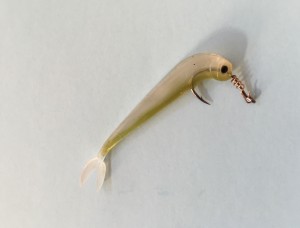
Thread the hawg Shad or other soft plastic onto the hook to the correct point for a straight final presentation.
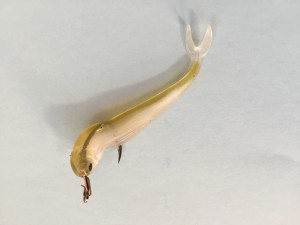
Screw the bait onto the keeper by turning and applying light pressure. This may feel a bit awkward as you have to bend the tail of the plastic around the hook point with each turn.
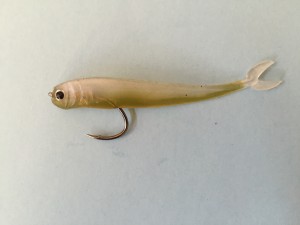
When it’s screwed on all the way the bait should lay straight and ready to fish.
